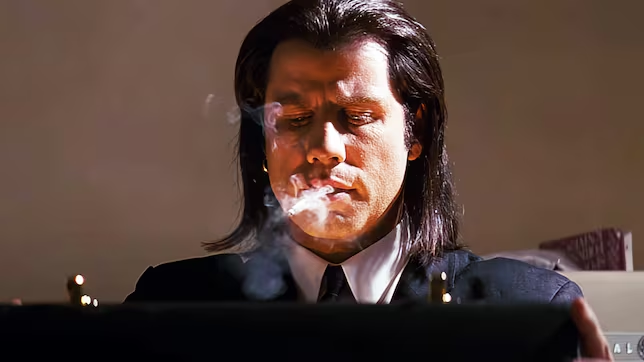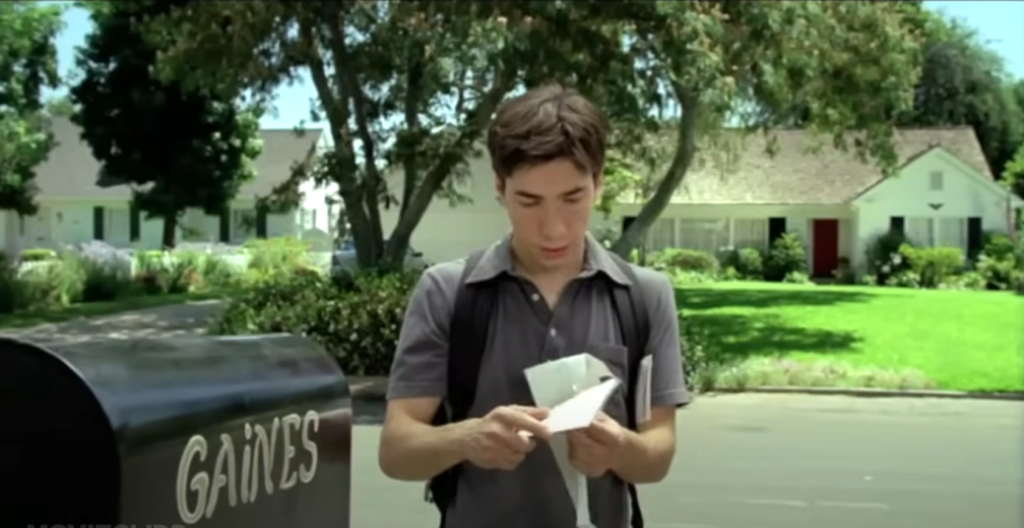Unveiling the Mystery
In the world of cinema, few props have garnered as much attention and speculation as the briefcase in Pulp Fiction. This simple, nondescript briefcase, carried by Jules and Vincent as they navigate the criminal underworld of Los Angeles, has become one of the most iconic and mysterious elements in film history. Despite its ordinary appearance, the briefcase is imbued with a sense of intrigue that has sparked countless fan theories and discussions since the film’s release in 1994.
What is inside the briefcase? This question has captivated audiences for decades, as Quentin Tarantino masterfully leaves its contents a mystery, allowing the briefcase to take on a life of its own. The allure of the briefcase lies not in what it contains, but in what it represents—a symbol of power, desire, and the unknown. As we delve deeper into Pulp Fiction, we will explore how this seemingly simple prop became a pivotal element in the film’s narrative and a lasting symbol of mystery in the cinematic world.
The Role of the Briefcase: A Plot Catalyst
In Pulp Fiction, the briefcase serves as a crucial plot catalyst, driving the actions of key characters and intertwining the film’s multiple storylines. From the moment Jules and Vincent retrieve the briefcase from a group of young criminals, its presence is felt throughout the film. The briefcase’s retrieval sets off a chain of events that impact the lives of nearly every character, from the violent confrontation in the apartment to the climactic standoff at the diner. Its role as a MacGuffin—a term coined by Alfred Hitchcock to describe an object that drives the plot but is ultimately irrelevant to the story’s outcome—adds to its enigmatic nature.
The briefcase’s importance is further emphasized by the way it connects the film’s seemingly disparate stories. Whether it’s Vincent Vega and Mia Wallace’s night out, Butch Coolidge’s desperate run for freedom, or Jules Winnfield’s spiritual awakening, the briefcase is a constant, unseen force linking these narratives together. By leaving the contents of the briefcase ambiguous, Tarantino enhances its mysterious allure, allowing it to become a symbol of whatever the audience desires it to be. This deliberate choice not only deepens the briefcase’s role as a narrative device but also cements its place as one of the most enduring mysteries in film history.
Visual Symbolism: The Glow of the Unknown
One of the most striking visual elements of the briefcase in Pulp Fiction is the golden glow that emanates when it is opened. This glowing light, never fully explained or shown, adds a layer of mystique to the briefcase’s contents, making it a powerful symbol within the film. The golden hue is rich with symbolism, often interpreted as representing wealth, power, or even something more metaphysical, such as the soul or divine intervention. This glow, combined with the characters’ reverent reactions when they open the briefcase, elevates it from a mere plot device to a symbol of ultimate desire or value.
The glow also contributes significantly to the film’s atmosphere and tone. In a movie filled with dark humor, violence, and moral ambiguity, the briefcase’s glowing light serves as a rare, almost otherworldly element that hints at something larger than the gritty, chaotic world the characters inhabit. This visual choice by Tarantino adds to the surreal quality of the film, blending the ordinary with the extraordinary and challenging the audience’s perceptions of reality within the story.
By choosing to never reveal the source of the glow, Tarantino leaves the briefcase open to interpretation, inviting viewers to project their own meanings onto it. Whether it’s viewed as a symbol of material wealth, spiritual enlightenment, or pure narrative artifice, the glow within the briefcase remains one of the most memorable and debated aspects of Pulp Fiction, reinforcing the film’s status as a modern cinematic classic.
Theories and Interpretations: What’s Inside?
Since Pulp Fiction was released in 1994, the contents of the briefcase have become one of the most debated topics in film history. Fans and critics alike have proposed a variety of theories, each offering a different perspective on what the briefcase might hold. One of the most popular and plausible theories is that the briefcase contains Marsellus Wallace’s soul. This theory stems from the fact that the combination to open the briefcase is 666, the “number of the beast,” and the golden glow is thought to represent the soul, with the band-aid on the back of Wallace’s head symbolizing the spot where his soul was removed.
Another theory suggests that the briefcase contains the diamonds from Tarantino’s earlier film Reservoir Dogs. Given Tarantino’s penchant for interconnecting his films, it’s not far-fetched to think that the briefcase is a direct link between his works. This theory leans on the idea that the glow represents the immense value of the diamonds, although it’s less metaphorically rich than the soul theory.
More outlandish interpretations range from the briefcase containing the Oscar that Tarantino never won (at the time) to it holding the nuclear football, symbolizing ultimate power. These theories, while less serious, highlight how the briefcase invites a wide array of interpretations, each reflecting the viewer’s own perspective on the film’s themes.
What makes these theories so compelling is that they all tie back to the central themes of Pulp Fiction: redemption, power, and desire. The briefcase, with its alluring yet undefined contents, acts as a blank slate onto which viewers can project their ideas and interpretations. This open-ended nature not only keeps the audience engaged long after the film has ended but also reinforces Tarantino’s narrative style, where the journey and the characters are far more significant than any object they pursue.
The Briefcase as a MacGuffin: A Tool for Storytelling
In cinematic terms, the briefcase in Pulp Fiction functions as a classic MacGuffin—a plot device that motivates the characters and drives the story forward, but whose specific nature is ultimately irrelevant to the overall narrative. Coined by Alfred Hitchcock, the concept of a MacGuffin is rooted in the idea that the object itself isn’t important; what matters is how the characters interact with it and what it reveals about them.
In Pulp Fiction, the briefcase serves this purpose perfectly. While it connects the various storylines and characters, its true significance lies not in what it contains but in how it influences the actions of the characters around it. The briefcase triggers violence, drives Jules towards a spiritual awakening, and ties together the film’s nonlinear narrative. By keeping the contents of the briefcase ambiguous, Tarantino shifts the audience’s focus from the object itself to the interactions and transformations of the characters.
Tarantino’s use of the briefcase as a MacGuffin also speaks to his broader narrative style, where the emphasis is on dialogue, character development, and the blending of different stories into a cohesive whole. The briefcase’s role as a MacGuffin is a testament to the film’s intricate storytelling, where the object of desire is merely a tool to explore deeper themes and character dynamics.
Legacy of the Briefcase: A Pop Culture Phenomenon
Over the years, the briefcase from Pulp Fiction has transcended its role in the film to become a pop culture icon. Its mysterious nature and the countless theories surrounding it have made it a staple in discussions about cinema, often referenced and parodied in various forms of media. From TV shows like The Simpsons to other films that feature enigmatic objects, the influence of Tarantino’s briefcase is undeniable.
The briefcase has also inspired a wave of similar narrative devices in film and television, where the contents of a particular object are deliberately left ambiguous to heighten the intrigue. Movies like Ronin and Kiss Me Deadly have used similar MacGuffins to great effect, borrowing from the mystery that the briefcase in Pulp Fiction so effectively created.
Its lasting impact on audiences and filmmakers alike speaks to the power of ambiguity in storytelling. The briefcase has become a symbol of Pulp Fiction itself—complex, multifaceted, and endlessly fascinating. It’s a testament to Tarantino’s skill as a storyteller that something so simple could have such a profound and lasting impact on the world of cinema.
The Power of Ambiguity in Cinema
The briefcase in Pulp Fiction is more than just a prop; it’s a masterclass in the power of ambiguity in storytelling. By choosing not to reveal its contents, Quentin Tarantino created one of the most enduring mysteries in film history, one that continues to captivate and inspire audiences. The briefcase’s role as a MacGuffin allowed the film to focus on the characters and their journeys, while its mysterious glow added an element of the unknown that deepened the film’s impact.
This deliberate ambiguity invites viewers to engage with the film on a deeper level, encouraging endless theories and discussions. It’s a powerful reminder that sometimes, what’s left unsaid or unseen can be more compelling than what’s revealed. The briefcase in Pulp Fiction exemplifies how ambiguity, when used effectively, can elevate a narrative and leave a lasting impression on cinema and its audience.



